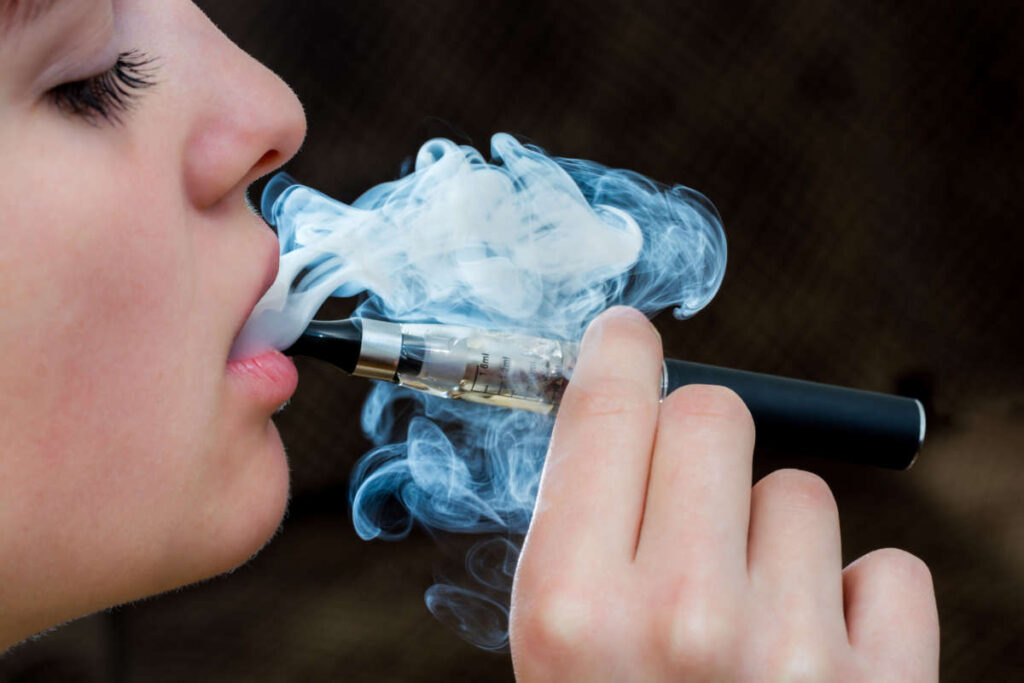By Crystal Maerten
Youth vaping is a pressing concern in public health. Vaping devices, once perceived as a safer alternative to traditional smoking, have found their way into schools and youth culture, cutting across demographics and socio-economic backgrounds. The rise in vaping among children and teens has been swift and significant, creating urgency to develop effective programs for youth vaping prevention.
This widespread adoption of vaping among children and teens threatens to undermine years of progress in combating tobacco use among minors. Public health officials, educators, and community leaders must come together to devise and implement comprehensive strategies to curb this alarming epidemic. This article highlights the scale of the problem and explores effective measures for youth vaping prevention to protect children and teens from long-term vaping-related health risks.
The Alarming Rise of Vaping Among Children and Teens
E-cigarette use by teens is not just growing, it’s skyrocketing. According to the National Youth Tobacco Survey conducted between 2011 and 2018, there has been an unprecedented surge in e-cigarette use among students in 8th to 12th grades. This rise is not a mere statistical blip—it’s a clear indicator of a growing public health concern.
Data from a 2019 survey of Minnesota students mirrors these national trends. The findings are particularly alarming, revealing that the adoption of vaping by young people during the preceding years outpaced the use of traditional tobacco cigarettes by a factor of five. Results from a 2020 Minnesota Youth Tobacco Survey were equally concerning. They indicate that the percentage of teens vaping remained unchanged from 2019 to 2020, despite a drastic change in social and environmental factors during this period marked by the global COVID-19 pandemic.
Youth vaping statistics paint a clear picture: Vaping among children and teens is not just a passing trend, but a deeply entrenched habit that is spreading at an alarming rate. The rapid increase in vaping, along with its apparent resilience during a global health crisis, underscores the need for targeted public health interventions for vaping and educational campaigns to reverse this trend.
Factors That Contributed to the Surge in Vaping
Several interconnected factors have fueled the alarming rise in youth vaping.
- Misconceptions about safety. Many young people view vaping as a harmless alternative to traditional smoking, and they underestimate the health risks associated with it. This misperception is bolstered by marketing strategies that portray vaping as ‘cleaner’ or ‘less harmful’ than smoking tobacco.
- Ease of access to vaping products. E-cigarettes and related products are readily available online and in stores; often, they’re sold without age verification. Furthermore, the discreet design of many vaping devices, which can resemble common items like USB drives, makes it easier for teens to hide the devices and use them unnoticed, even in environments like schools.
- Creation and influence of a vaping culture. Vaping has been portrayed as a trendy and socially acceptable behavior among peers, with social media platforms serving as a catalyst for its promotion. Influencers and peers often share images and videos of themselves vaping, which glamorizes the act and creates a sense of belonging and social acceptance.
Understanding these underlying causes is essential for developing effective vaping prevention strategies and public health interventions aimed at curbing this growing epidemic.
Vaping-Related Health Risks
While the full spectrum of health risks associated with vaping is still being studied, current evidence points to both immediate and potential long-term consequences, especially for children and teens.
- Respiratory issues. E-cigarettes can contain harmful substances like nicotine, ultrafine particles, heavy metals, and flavoring chemicals, which, when inhaled, can cause lung irritation and damage. These substances can cause a range of respiratory problems, including coughing, wheezing, and worsening asthma symptoms. In severe cases, it has led to serious lung conditions like e-cigarette or vaping use-associated lung injury (EVALI.)
- Cardiovascular health. Nicotine, a common ingredient in e-liquids, can increase blood pressure and heart rate, leading to heightened stress on the cardiovascular system. Over time, this can contribute to an increased risk of heart-related issues, including heart attacks and strokes.
- Brain development and mental health concerns. Nicotine can disrupt the development of brain circuits that control attention, learning, and susceptibility to addiction. This can result in reduced impulse control, cognitive impairment, and an increased risk of developing other addictive behaviors later in life. The use of nicotine can also exacerbate anxiety, depression, and stress among young users.
- A potential gateway to other substance use. The addictive nature of nicotine can set a precedent for experimenting with other, more harmful substances, increasing the risk of substance use disorders.
The Role of Regulation and Vaping Education Programs
Shifting the culture of youth vaping requires us to reframe vaping from a socially accepted norm to a public health concern. Just as public health initiatives successfully shifted cultural perceptions of cigarette smoking over the past decades, a similar transformative approach is needed to counter the current vaping trend. Regulations that limit access, control advertising, and demote the social acceptability of vaping are instrumental in shaping behaviors and attitudes.
Vaping education programs, when introduced early and integrated into ongoing youth education, can significantly reduce the allure of vaping and emphasize its dangers. These programs, especially when combined with strong vaping regulations and policies, create a framework for prevention.
A Community Effort
The success of youth vaping prevention strategies hinges on a collective effort from a broad spectrum of stakeholders. Educators, parents, public health officials, and policymakers must work in concert to safeguard the health and well-being of our youth. Each group has a unique role, from implementing educational programs and advocating for policy changes to fostering environments that discourage vaping.
Learn More
For an introduction to this and other youth vaping prevention topics, watch the webinar Vaping Strategies to Slow the Runaway Train.


